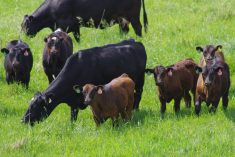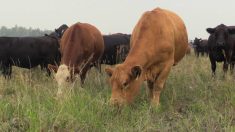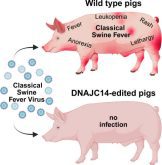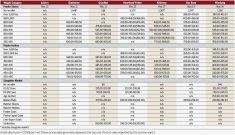Cattle traffic through Manitoba auction yards was slowing down during the week ended May 4, as spring field work starts to take precedence over marketing and a number of auction yards moved to reduced schedules. From a pricing standpoint, activity was steady overall. However, on a case-by-case basis, the markets were more mixed, with some classes of cattle seeing an improvement on the week in one location but declining slightly in another.
“There have been no real changes,” said Dave Nickel of Gladstone Auction Mart, although he noted numbers were slowing to the point “that we’ll almost run out of cattle this year.
Read Also

Lactanet moves to monthly on dairy genetic reports
Lactanet is now publishing monthly dairy genetic evaluations, giving dairy farmers more up-to-date data to make breeding decisions.
“We’re into that time of year when guys are cleaning out their pens, and we’re getting a lot of second- and third-cut cattle,” said Nickel. “Most of the good cattle are already through the system.”
Cam Dahl, general manager of Manitoba Beef Producers, said strong prices on the cow-calf side recently were good news for producers in the province. Some of that firmness was tied to an increase in retained heifers, as the province’s cattle sector shows some growth.
“Across North America we’ve seen significant declines in herd numbers, and supply and demand are catching up,” he said.
However, volatility in feed grain markets was causing some concern for feedlot operators, leading to some tight profitability margins on that side, said Dahl.
The recent BSE case in the U.S. was having little impact on Manitoba cattle markets, he said, as the acceptance of the science-based approach to dealing with sporadic BSE findings means one case of an old dairy cow in California will not cause a lasting impact on the market.
Looking closer to home, “we still have a lot of pasture and hay land around the lakes that is either under water or will be completely unproductive this year,” said Dahl.
“We’ll need to continue to work with the government,” he added, noting that efforts need to be made to restore forage land and also to aid producers who need to move their cattle and access hay.
Aside from those flooded-out areas, pasture conditions are in “pretty good shape” across Manitoba, said Dahl.
Nickel agreed recent precipitation was beneficial for the pasture land in many areas of the province.
“Despite some of those negatives, there’s a lot of optimism out there,” said Dahl. He added that it’s been a good spring for calving, and the mild winter helped reduce stress levels for the animals.
“On the cow-calf side, things are really strong, but they’re not as rosy on the feeder side just because of high feed prices, tight margins and volatility.”
Those concerns faced by livestock feeders have not yet worked their way back to the cow-calf sector, which Dahl said was due to the herd reductions over the past few years.
The Manitoba Livestock Marketing Association held its annual meeting on May 4, in conjunction with the Manitoba-Saskatchewan auctioneer championships, at the Heartland Livestock Services location in Virden.















